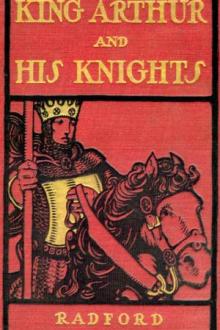King Arthur and His Knights by Maude L. Radford (100 best novels of all time .txt) 📕

- Author: Maude L. Radford
- Performer: -
Book online «King Arthur and His Knights by Maude L. Radford (100 best novels of all time .txt) 📕». Author Maude L. Radford
d of the archbishop on Twelfth day, which is the sixth of January, all the great lords assembled in the churchyard. Each tried to draw forth the sword, and each failed. Then the untitled people came and tried. Everyone failed until at last Arthur stepped forward. He hardly more than touched the sword when it came away in his hand.
At this many of the great lords were angry.
[Illustration: "He hardly more than touched the sword"]
"He is but a boy," they said, "and not of high blood."
They refused to believe the story of his birth told by Merlin and Sir Hector. And because of all the quarreling, it was decided to have another trial at Candlemas, which fell in the month of February. Again Arthur was victorious. Then the great lords decreed that there should be another trial at Easter, and again Arthur succeeded. Next they decided to have a final trial at the feast of the Pentecost, which fell in May.
Meanwhile, Merlin advised the archbishop to see that Arthur had a bod
Free e-book «King Arthur and His Knights by Maude L. Radford (100 best novels of all time .txt) 📕» - read online now
Similar e-books:





Comments (0)